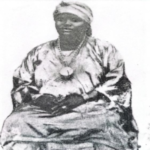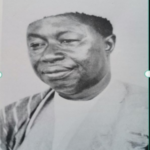Sir Charles McCarthy (1769-1824) was a governor of Sierra Leone in the early 19th century and whose period of rule was looked back on as a golden age of internal prosperity. A man of vision and humanity, he was the first to face the task of rehabilitating the receptive population around Freetown. He also transformed Freetown by an ambitious program of public building.
During his governorship he tried to consolidate all British territories in West Africa under one governor-in-chief. He was killed in the Gold Coast in a war against the Asante (Ashanti) of what is now Ghana. Sir Charles McCarthy came from a family of Irish Jacobites whom the English exiled to France in the late 18th century.
His father, whose name was Guéroult, was French but he adopted his mother’s surname. At the age of18 he became a soldier and served in the Irish Brigade of Louis XVI’s army until the French Revolution.
A Roman Catholic, detesting republicanism, he left France and joined the British army, serving in Flanders, the West Indies and Canada. He commanded the Royal African Corps in Senegal in 1811, and was transferred in 1814 to Sierra Leone as lieutenant governor and promoted to full governor in 1815.
Since 1808 Sierra Leone had been the center for the British naval campaign against the slave trade. Slave ships captured on the Atlantic Ocean were brought there for adjudication in the courts and freed slaves were settled in the Colony. The British government, although responsible for them, did little for the freedmen whom they regarded as a burden. McCarthy, however, with a far-reaching vision of Africa transformed into a Christian continent, re-fashioned the miserable settlements around Freetown into villages modelled on the English pattern and added some ten or more new villages in the Colony.
By persuading the British government to supply funds (even at a time of retrenchment in colonial expenditure) and enlisting the co-operation of Church Missionary Society (C.M.S.) clergymen and missionaries, he went far towards establishing those African Christian communities whom he dreamt would go out to spread the faith throughout the continent.
McCarthy also obtained money from the British government to pay for improvements to Freetown, where he built most of the large public buildings which are still standing today (though some of his over-ambitious projects were in disrepair by the time of his successor). As a military and naval headquarters, with money being visibly spent on public works, the town attracted European businessmen, while the settlers, mainly Nova Scotia’s and Maroons built houses and shops to sell or let.
McCarthy’s governorship saw Freetown transformed from an untidy village into an attractive city, with a lively social life. It was also a tine of good relations between Africans and Europeans, for he was determined to break down distinctions on grounds of colour. One such measure being to appoint a few settlers to municipal office. But he was not content merely to govern Sierra Leone.
In 1816, British claims in the Gambia were asserted, and McCarthy founded the town of Bathurst (named after the Secretary of State, Lord Henry Bathurst), now called Banjul.
He persuaded the British government to annex the Isles of Los, lying between the Gambia and Sierra Leone, and in 1824, with the British trading forts on the Gold Coast (Ghana) transferred to the crown, all British territories in West Africa were united, with McCarthy (now Sir Charles) as governor-in-chief. Unfortunately, he knew little of the Gold Coast and its politics, and was easily manipulated by the British officials there, some of whom were determined to wage war with Asante.
As the head of his troops he marched out against the Asante, and met them at Nsamankow (Insamankow) on January 21, 1824. For once his optimism failed him. His troops were almost annihilated; he was killed and his head carried in triumph to Kumasi. McCarthy’s ignominious death should not obscure his achievements. His dream for the Sierra Leone reception came true.
Thanks to his imaginative plans and his determination to carry them out, they were transformed within a few decades of his death into a Christian community leading the kind of Europeanized life he had wanted for them. As he had foreseen they began in the 1840s to return to their own homes along the coast bringing with them the skills and new ways they had learned. Within a generation or two Sierra Leoneans were scattered throughout West Africa, forming a European-educated elite, and helping to transform its peoples in the way he had intended.
CHRISTOPHER FYFE


